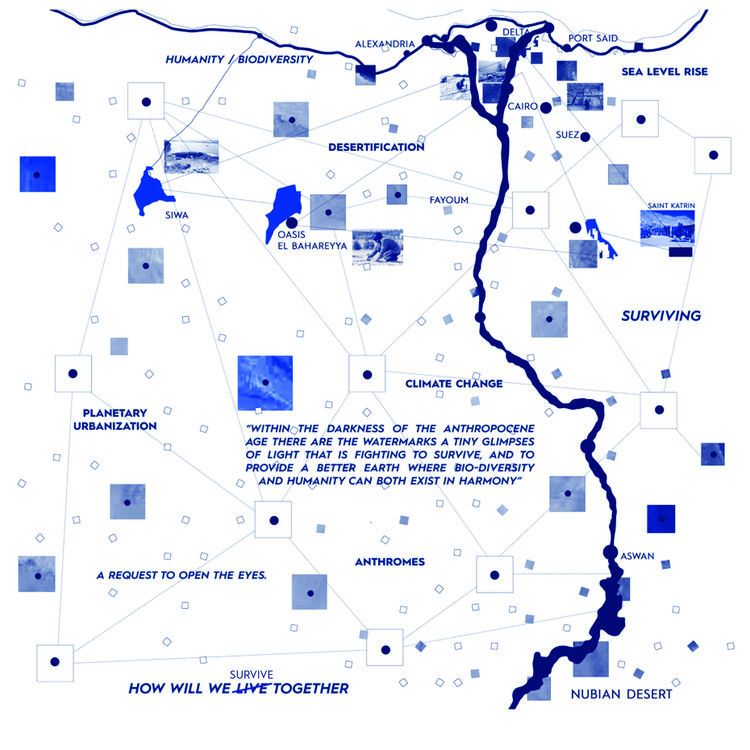
Cosmos Architecture, an international practice based in Madrid, Milan, Shanghai, and Cairo has designed a proposal for the Egyptian Pavilion in the Venice Biennale 2020. The project is an awareness campaign, highlighting diverse environmental issues occurring in Egypt and presenting proper solutions.

Tackling the loss of its biodiversity in Egypt due to rapid urbanization, demographic fluctuations, technological peril, and climate change, the pavilion proposes inputs that can restore the natural balance. In fact, in their description, Cosmos Architecture state that “the pavilion is a showcase to the contributions aiming to the balance of ecological diversity in Egypt, to control the expansion of the land, and to introduce nature into the city, creating a new symbiotic urban environment”.

In order to reinstall a healthy equilibrium, the conceptual approach puts in place an experimental path for the visitors, “a journey of exploration inside this Anthropocene environment”. Content will be exhibited inside steel meshes, to constantly trigger people’s curiosity. Steel mesh and lighting panels will come together to represent the watermarks, “the lighting inside the darkness”. Actually, “the small scale of these plates is a symbolic representation to show the domination of the Anthropocene effect in comparison to the good human contributions nowadays”. Visitors will be encouraged to search for good interventions.

The floor of the pavilion, dominated by hardened sand, showcases four main elements, each representing one of the dangers facing humanity and biodiversity. Through this concept, the architects aim to open people’s eyes to what can be lost. The watermarks, representing clean and environmentally friendly technologies, are a direct answer to the Anthropocene problems. During the research process prior to the design, architects studied the reaction of different places to the effects of the anthropogenic climate-related phenomena, concluding that “designing for climate change comes in many different forms, depending on the symptom, the geographic location, and needs, based on risks”. Some projects aim to conserve or preserve natural habits, while others respond by the adaptive reuse of old and outdated industrial wastelands.

Cosmos Architecture participated in a competition organized by the Egyptian ministry of culture for the design of the national pavilion in the 2020 Venice Biennale. The project was selected last December for the final phases of the contest.

Read on for the statement of the architects:
"Humans are the actors in an era of accelerated planetary crisis which has recently earned itself a new geological epoch called the Anthropocene. Based on the overwhelming evidence that human activity has marked itself as a major force of nature."
"In this new era we saw unprecedented land degradation, and the loss of arable land at 30 to 35 times the historical rate. Drought and desertification are also on the rise each year, amounting to the loss of 12 million hectares and affects poor communities globally. Of the 8,300 animal breeds known, 8 percent are extinct and 22 percent are at risk of extinction."
"Egypt is witnessing a huge loss of its biodiversity, about 95 species of plants, insects, birds, and animal are in danger of extinction due to the rapid urbanization that is taking over the agricultural lands, the demographic changes, overconsumption, and the use of technologies that damage the environment, now combined with climate change, are pushing our country and our planet to its limits."
- Project Team: Mohamed Hassan El-Gendy, Sameh Zayed, Pietro Paolo Speziale, Juan Martinez, David Sastre, Nader Moro








